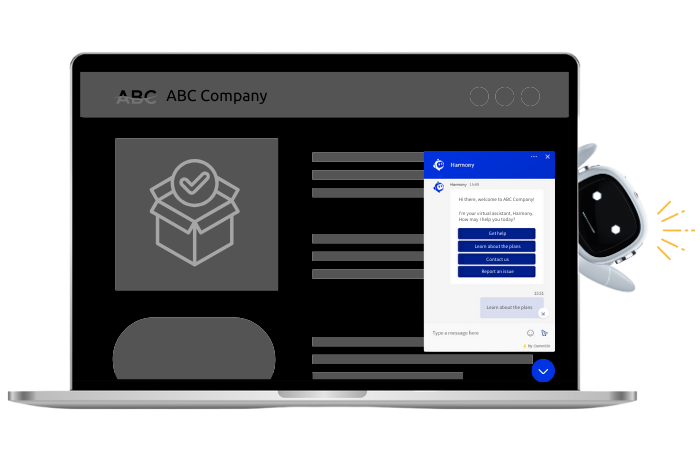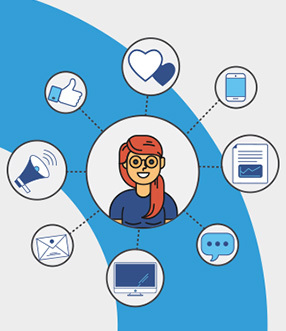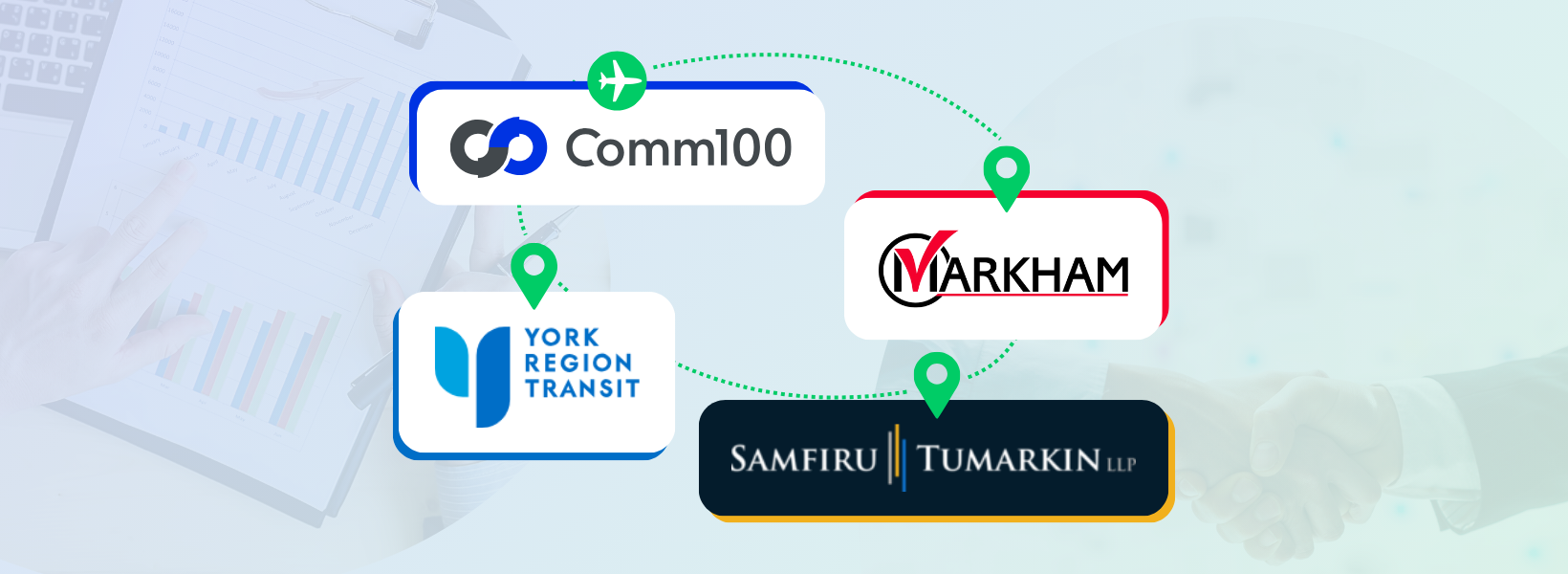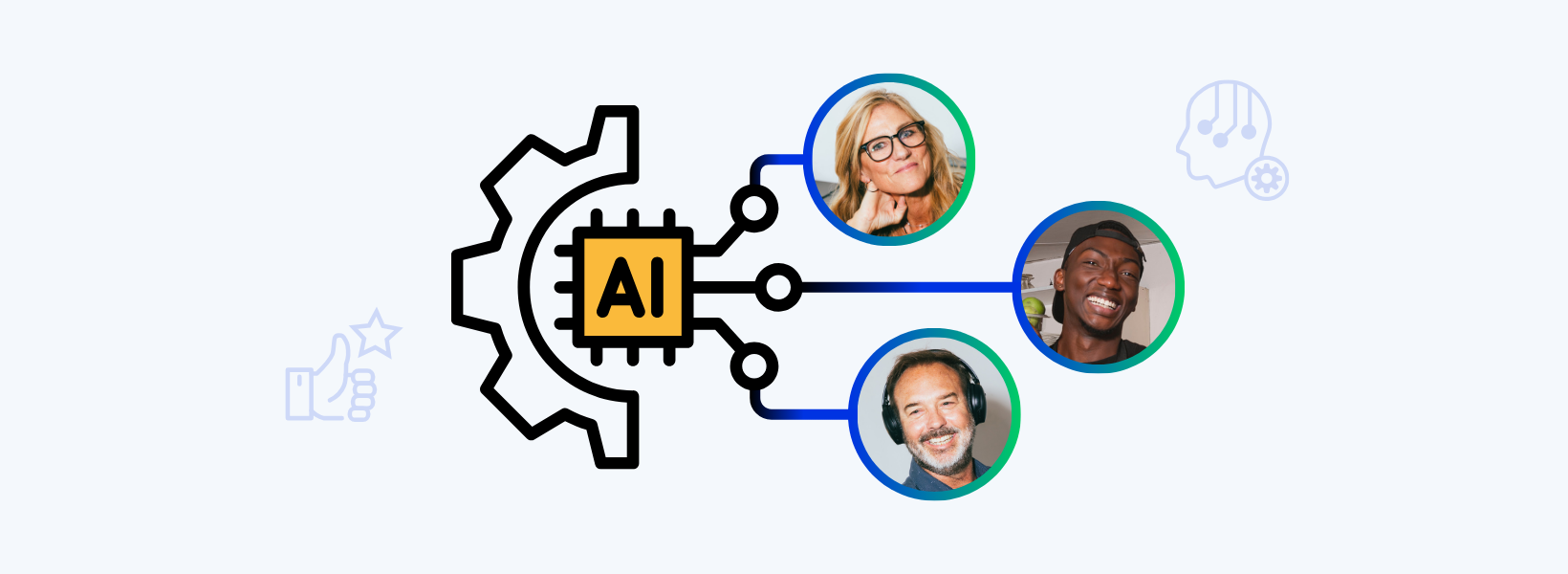Customer engagement software is a modern invention that takes care of a modern problem. After all, it wasn’t until the rise of the internet that media became democratized, and the one-way communication model between companies and customers was shattered. From the rubble, a new dynamic emerged (the same one we know so well today): organizations spoke to customers and customers held the power to reply.
Greater consumer power brought forth a new reality for companies. Businesses that listened to and connected with customers online were rewarded with consumer engagement in the form of clicks, mentions, subscriptions and more. But how were companies to manage, track, and convert an ever-growing number of interactions into revenue? The answer for many businesses was customer engagement software.
Today, if you google ‘Customer Engagement Software’, you’ll find that the top results are lists of the best customer engagement tools on the market. The problem is that these lists aren’t composed of the top 10, or even the top 20 customer engagement platforms – Capterra’s list currently features 100 platforms, and Software Advice boasts over 400.
The density of these lists isn’t Capterra or Software Advice’s fault. The fact is that there are many customer engagement platforms on the marketplace. The term ‘customer engagement software’ alone encompasses a wide variety of services, which results in pages that lump together very different types of solutions. This makes it difficult for customers to shop for the software that would be most appropriate for their business.
This blog post aims to demystify customer engagement software by identifying the kinds of engagement tools that are out there, and what these tools are good for. In doing this, we hope to make shopping for a customer engagement software solution easier and less overwhelming for our readers.
From customer relationship management (CRM) software to knowledge base and social media tools — it almost seems harder to find a software solution that isn’t considered a customer engagement tool than one that is. As CRM thought leader, Paul Greenberg puts it: “When it comes down to it, most of the [vendors] in this market may call themselves customer engagement companies, but [they] don’t compete with each other because their products are so different … There is no definition to this emerging market yet.”
While there may be a wide range of vendors hitching their products to the “customer engagement” buzzword, these software solutions do share a common broader theme. Ultimately, the umbrella of customer engagement technology covers any software that helps businesses manage and/or foster customer communications and interactions (i.e. engagement). These software solutions can help organizations meet customers at any number of vital touchpoints, such as through live chat, social media, self-service, marketing, and more. Most importantly, they aim to personalize customer interactions throughout the entire customer lifecycle.
With the popularization of the internet, customers began to transition from occupying physical to virtual spaces. This change had a huge impact on how businesses treated customer engagement, and eventually resulted in the creation of customer engagement software.
Before the internet revolution, customers occupied physical environments and played a passive role in corporate strategizing. Engagement consisted of a direct interaction between the company and its current customers – usually on the company’s terms (such as when businesses reached out for input on product testing and development). With the rise of virtual environments, customers became active participants in the conversation and partners in the innovation process. Unlike physical engagement, virtual engagement prompted a continuous back-and-forth dialogue between companies, customers, and customers-to-be. This put power into the hands of the consumer, and lead businesses to focus in on the customer experience.
The beauty of virtual spaces is not only the establishment of a different, more customer-centric corporate culture: customers’ footprints are now easier than ever to map and transform into revenue. Feedback is easier than ever to collect, and customer demands (although ever-growing) are becoming easier to identify and meet.
Engaged customers are the most profitable customers, and help companies achieve crucial business outcomes. Gallup’s findings show that “a customer who is fully engaged represents an average 23% premium in terms of share of wallet, profitability, revenue, and relationship growth compared with the average customer. In stark contrast, an actively disengaged customer represents a 13% discount in those same measures.”
Customer engagement tools help businesses make the most out of customer engagement by facilitating the process of tracking, stimulating, and analyzing customer behavior and sentiment. Companies can then use customer engagement data to enhance their engagement strategies, program smarter marketing automation, deliver more personalized customer service, and better meet customer needs.
It’s important to note that not every piece of customer engagement software does the same thing. Some software solutions specialize in one single touchpoint or area of customer engagement — such as through social media, marketing, the company website, live chat, etc. Others may have tools that allow companies to partake in multichannel or omnichannel customer engagement. Different customer engagement tools may also address different stages of the buyer’s journey, collect distinct information, and provide companies with different technology and features for interacting with and monitoring customers.
If there are so many types of customer engagement tools, what are they? And what makes them different? These are common types and functions of customer engagement software:
-
CRM Software
Before customer relationship management (or CRM) software was invented, companies used lists and spreadsheets to categorize customers and manage contacts. Nowadays, CRM software allows business to easily manage their relationships with customers and the information associated with them in an online database.
Modern CRM software aims to integrate and automate 3 key functions: sales, marketing, and customer support. To do this, CRM software tools collect and store key information about customers, such as:
- Contact details (customer names, locations, phone numbers, mailing and email addresses, etc.)
- Contact history (what type of contact have your customers made? How many times they have reached your company? How did they find your website? What were the nature of their inquiries?)
- Accounts (do they have an account? If so, what kind? Do they have a special status, i.e. gold member, etc.?)
- Past sales (what did they buy and when? How many purchases have they made? Were they online or in-store purchases?)
- Previous marketing efforts (are they on an emailing or mailing list? If so, what promotional material has been sent out to them?)
When pooled together, this information makes up a database of all the transactional, navigational, and support-based contact that a customer has had with a business, effectively summarizing that customer’s relationship with the company. By analyzing customer interaction metrics, CRM software solutions can identify leads, focus customer retention efforts, analyze the performance of marketing campaigns, and grow sales.
CRM software stores customer data from various channels — such as email, brick and mortar stores, and the website — in one central location: ideally the cloud. From the cloud, customer data is accessible in real time to users from different departments, from any device.
In past years, CRM has faced another change: from traditional to social CRM. This change means that not only does CRM software collect and store customer data from direct interactions such as email and phone — most CRMs now collect data from customers on social channels as well. This data has applications in marketing, customer service, and sales: it allows companies to track brand awareness, changes in consumer sentiment, and other information that wouldn’t be readily available without the use of social media.
Recently, developers have seen a demand for industry-specific CRM software solutions. These solutions tailor the CRM model to fit the needs of businesses in specific industries such as restaurants, governments, freelancers, and more.
Just like how no two customer engagement tools are exactly alike, no two CRM software solutions offer the exact same features and functions. While many CRMs strive to combine sales, marketing, and customer support, some CRMs cater more closely to a particular function. HubSpot, for example, is a very sales-focused CRM — meanwhile other CRM software solutions exist just to serve customer service teams, with no sales or marketing functionality.
While your typical CRM software does not directly engage with customers, it does collect data that ensures that the marketing, sales, and customer service teams will have an easier time of doing so. That being said, many popular CRMs now also provide solutions with a direct focus on customer engagement. Other CRMs can be integrated with third party customer engagement software solutions to boost customer engagement and maximize lead converting capabilities.
Examples of top CRM software tools: Salesforce, Microsoft Dynamics 365, Insightly, Zoho, HubSpot
-
Live Chat Software
Live chat software has many functions. It’s primary and most well-known purpose is to engage with website visitors in real time. With live chat solutions, a customer (or potential customer) who is visiting a company’s website has the option to click on a live chat button to start a conversation with a customer service agent. This can help website visitors alleviate any pre-purchase doubts, and reduce shopping cart abandonment. It also helps reduce the amount of phone calls and emails received by contact centers. The result is lower queues, less friction in the customer experience, and reduced operational costs. Live chat fully embraces the model of virtual customer engagement: it gives customers a tool with which to reach out to a company on their terms, while also allowing a two-way dialogue. With live chat, companies have the ability to reach out proactively to customers with deals, promotions, or just a friendly message offering assistance. It also gives companies the opportunity to upsell products, and convert leads.
But live chat providers don’t expect you to reach out to customers at random – live chat solutions use website traffic monitoring to help businesses keep track of customer data. Companies that use live chat software can see the following information:
- Who is on their website
- How each visitor found their website (through a search engine, social media, etc.)
- How long each visitor has been on their website
- What page each visitor is browsing
- Where the visitor is geographically located
- Whether each visitor is a repeat customer or a first-time buyer
- Visitor account information
Live chat software solutions can produce reports from the data collected that help businesses identify where they can make improvements. This data (and more) can also be used to automate and personalize live chat, bringing better customer service and sales capabilities to websites. Personalized proactive messages can be sent automatically to visitors who fit certain criteria (for example, a visitor who has spent 5 minutes or more on a specific page), connecting them instantly with an agent should they choose to engage.
Another popular way for businesses to automate their live chat software is through artificial intelligence (AI) — or in other words, with a Chatbot. A Chatbot is a machine-operated service that acts like a customer service agent, helping customers with everyday queries. It’s a sort of easily accessible knowledge base that gives smarter, more accurate answers the more it is interacted with. While many Chatbots are designed to be a service of their own with no human backup, companies like Comm100 offer Chatbots that are integrated with the existing chat interface, meaning that customers can switch seamlessly between a machine and a human representative.
Many live chat providers work well with CRM software tools such as Salesforce to create a smoother, more integrated approach to customer engagement software. Others have shifted to offer additional customer engagement tools to further assist companies.
Examples of top live chat tools: Comm100, BoldChat, LivePerson
-
Social Media Software
More than anywhere else, customer engagement happens on social media.
With social media software, companies can manage engagements on popular social platforms such as Twitter, Facebook, LinkedIn, Google+, Instagram, and Snapchat — oftentimes on one dashboard.
Social media software can perform several different functions. That being said, most social media tools strive to track how customers are engaging with the brand, and how the brand is engaging with customers.
By tracking how their brand is engaging with customers, companies can learn more about their own engagement patterns, such as their tweeting and/or posting behavior. This might include the following:
- How many tweets, statuses or posts their organization has published in total
- What kind of content their business publishes (links, photos, or text)
- Average daily publishing rate
- What hashtags they have used
Social media software also helps companies track how customers are engaging with their brand, which yields the following insights:
- Follower growth
- What hashtags are trending
- Which posts have received the most engagement
- How different campaigns are performing with customers (the ROI of paid vs unpaid campaigns).
By giving companies insight into how their online activity drives customer engagement, social media software can help businesses learn what is working and what isn’t, and adjust their social media strategies accordingly. As part of this action, many social media software solutions let companies set content to post automatically across various platforms based on the time of day that their customers are most active, maximizing their engagement and outreach.
Within the realm of social media software is also social listening tools. Social listening tools allow companies to listen in on when customers are mentioning them on diverse social platforms. Companies can use social listening data to learn how customers feel about their brand, monitor the competition, and make improvements according to consumer feedback. Social listening tools also give companies the chance to receive mention alerts, allowing agents to respond in real time to customer comments.
Many social media software solutions include social listening functions — others, such as Social Mention, work exclusively as social listening tools.
It’s not just social listening capabilities that set social media software solutions apart from one another. Like CRM software, distinct social media tools offer distinct functions that cater to different corporate needs. Hootsuite, for example, is a social media tool that works great for marketing. Other social media software solutions work best for customer interactions, and providing support via social media. Comm100, for example, allows businesses to listen in on customers and handle social media comments and inquiries just as professionally and systematically as they would handle any other communication channel.
Examples of top social media software: Hootsuite, Sprout Social, Comm100, Hootsuite, Social Mention
-
Marketing (Personalization) Software
Whether a company is selling to businesses, consumers, or both, marketing software can help automate the process and bring in greater revenue.
With effective digital marketing, companies can remain relevant, attract buyers, and personalize offerings and outreach to fit the needs of each customer.
Marketing software allows companies to market to consumers through a number of online channels. Many software solutions offer comprehensive tools which integrate the following:
- Web marketing (marketing based on website content)
- Social media marketing (paid and unpaid social media advertising)
- Search marketing (attracting customers with a high search ranking)
- Email marketing (mass-marketing via email)
- Account marketing (marketing geared toward accounts with the greatest revenue potential)
- Mobile marketing (sending in-app messages and push notifications to customers)
- Marketing analytics (reports on how your campaigns are progressing and which campaigns are delivering the highest ROI)
With these marketing tools, businesses can effectively map the customer journey and engage with buyers at pivotal touchpoints. Better yet, they can see how their campaigns are performing while doing it.
Customer-based marketing solutions also equip businesses to increase customer retention and market products to existing customers. This makes upselling even easier, and can even help companies bring back customers that haven’t been active in years.
Like CRM software, many marketing solutions include lead management tools. This feature helps companies attract and nurture the right buyers, resulting in a higher conversion rate. Leads that don’t convert right away can be nurtured over time through automation, and eventually become sales. Other solutions sync seamlessly with CRMs, saving time and increasing efficiency.
Above all, effective marketing is about personalization across all channels. Quality marketing software allows companies to create personalized messages to customers based on their geography, browsing history, app activity, and more. This and other personalized touches mean that companies get to build deeper relationships with customers, meet customer needs, and create a better customer experience.
Examples of top marketing tools: Marketo, MailChimp, InfusionSoft
-
PR Software
With so many online forums, blogs, social media sites and databases, it can be hard for companies to keep their online reputation in check. One great way for businesses to make sure that they are aware of what’s being said about them is public relations software.
There are many kinds of PR software solutions. Some focus specifically on social media PR and therefore share some overlap with social media software. Others, such as Mention (not to be confused with Social Mention), allow companies to monitor their brand reputation across all kinds of online media.
On the internet, company mishaps and negative customer stories can go viral in a matter of hours (or even less). PR software tools help business catch and respond to any budding PR emergencies before they get out of hand. With PR software solutions, companies — not consumers — control the dialogue about their brand.
Brands can also use PR software tools to craft more meaningful stories, and to connect with key influencers, journalists, and more. By reaching out to industry thought leaders, companies can increase outreach and spread brand awareness to key audience members that were previously inaccessible.
Other PR software solutions can help companies identify the ROI of their PR strategy and help them track the success of their PR efforts. These solutions track brand awareness and customer engagement, cluing companies in as far as which PR outreaches are effective and which ones need fine-tuning. Some PR solutions double as content marketing solutions — measuring trends, monitoring impact and audience sentiment to make sure that brands are being heard by their desired audience.
Examples of top PR software tools: AirPR, Mention, Cision
-
Self Service Software
Self service software is all about online customer engagement on the company website. Self service tools guide website visitors through the online decision journey without the need for human assistance. They make online shopping easier, and reduce the number of customers who will abandon the site mid-journey due to navigational issues or simple unsolved questions.
Self service software aims to empower customers from the landing page to the checkout page. During their journey, customers can search the website and easily find relevant information and answers to their questions. Self service software helps companies compile a thorough, easy-to-use knowledge base that customers can refer to quickly and effortlessly via the search bar, filters, or article labels. That way, customers can gain expert insight and resolve common queries on their own, without having to call in or connect with a live chat provider for advice. This reduces queue time and takes pressure off live chat agents and contact center staff.
A knowledge base isn’t the only thing that self service software providers offer. Many self service software tools allow customers to check the status of support tickets, meaning that even more personal support-based queries can be answered without external assistance. Others provide community forums, where customers and visitors can help one another.
Help desks are another common feature of self service software. Self service solutions can automate the help desk and the support ticketing solution based on pre-set rules, such as how many agents are available. Email ticketing also helps agents organize tickets, monitor tickets, update customers on the status of their support tickets, and collaborate with other agents on their resolution.
Many self service software tools also include live chat assistance and mobile responsiveness to appeal to a realm of customer necessities. Comm100’s self service knowledge base, for example, integrates with live chat so customers can check the knowledge base before a live chat begins.
By empowering customers to take care of simple issues on their own, companies can focus their resources on assisting customers with more critical issues. This reduces support costs, and eliminates friction from the customer and agent experience.
Examples of top self service tools: Comm100, Moxie, Happy Fox, Zendesk
-
Multichannel and Omnichannel Software
Customers don’t stay put on one device, and neither can companies. With ever-expanding platform options, companies need to be able to reach customers on several — or ideally all — channels. Multichannel and omnichannel customer engagement software offers tools to help businesses to do just that.
Whatever your company’s need, there’s probably a multichannel or omnichannel software solution that can fill it. There are omnichannel tools that specialize in marketing to customers across channels. Some specialize in reeling in multi or omnichannel sales. And — most importantly to customers — other software solutions specialize in multichannel or omnichannel customer care.
There are several benefits to adopting a multichannel or omnichannel software solution. One of those benefits is the ability to store data gathered across channels in a single place. Marketers and customer service agents can use or reference information previously stored from one channel when connecting with customers across another. This creates a smoother experience for the company, and a frictionless customer experience.
Multichannel and omnichannel customer engagement software solutions have different main focuses that fit the needs of different companies. For example, Comm100 is an omnichannel software tool that provides live chat as a key hub for customer contact. Omnichannel customer engagement solutions help companies adopt a frictionless approach to customer service by integrating live chat, social media, knowledge base, email, mobile and phone support into a singular customer service strategy.
With multichannel and omnichannel software solutions, companies can deliver a superior customer experience at every touchpoint. By connecting with customers across all channels, businesses can create a more effortless, satisfying, and personalized engagement experience for their customers and customers to-be.
Examples of top multichannel and omnichannel tools: Comm100, Genesys, eGain
Thanks to technology, the way that companies and customers engage with one another will always be evolving. The good news is that with these evolutions, new tools are always on the horizon, waiting to help businesses put their best foot forward in an ever-changing market.
We hope that this introduction to customer engagement software has helped shed some light on this enormous and growing industry.
What are your favorite customer engagement software tools? Let us know in the comments below!








